Immunology/Inflammation
The immune and inflammation-related pathway including the Toll-like receptors pathway, the B cell receptor signaling pathway, the T cell receptor signaling pathway, etc.
Toll-like receptors (TLRs) play a central role in host cell recognition and responses to microbial pathogens. TLR4 initially recruits TIRAP and MyD88. MyD88 then recruits IRAKs, TRAF6, and the TAK1 complex, leading to early-stage activation of NF-κB and MAP kinases [1]. TLR4 is endocytosed and delivered to intracellular vesicles and forms a complex with TRAM and TRIF, which then recruits TRAF3 and the protein kinases TBK1 and IKKi. TBK1 and IKKi catalyze the phosphorylation of IRF3, leading to the expression of type I IFN [2].
BCR signaling is initiated through ligation of mIg under conditions that induce phosphorylation of the ITAMs in CD79, leading to the activation of Syk. Once Syk is activated, the BCR signal is transmitted via a series of proteins associated with the adaptor protein B-cell linker (Blnk, SLP-65). Blnk binds CD79a via non-ITAM tyrosines and is phosphorylated by Syk. Phospho-Blnk acts as a scaffold for the assembly of the other components, including Bruton’s tyrosine kinase (Btk), Vav 1, and phospholipase C-gamma 2 (PLCγ2) [3]. Following the assembly of the BCR-signalosome, GRB2 binds and activates the Ras-guanine exchange factor SOS, which in turn activates the small GTPase RAS. The original RAS signal is transmitted and amplified through the mitogen-activated protein kinase (MAPK) pathway, which including the serine/threonine-specific protein kinase RAF followed by MEK and extracellular signal related kinases ERK 1 and 2 [4]. After stimulation of BCR, CD19 is phosphorylated by Lyn. Phosphorylated CD19 activates PI3K by binding to the p85 subunit of PI3K and produce phosphatidylinositol-3,4,5-trisphosphate (PIP3) from PIP2, and PIP3 transmits signals downstream [5].
Central process of T cells responding to specific antigens is the binding of the T-cell receptor (TCR) to specific peptides bound to the major histocompatibility complex which expressed on antigen-presenting cells (APCs). Once TCR connected with its ligand, the ζ-chain–associated protein kinase 70 molecules (Zap-70) are recruited to the TCR-CD3 site and activated, resulting in an initiation of several signaling cascades. Once stimulation, Zap-70 forms complexes with several molecules including SLP-76; and a sequential protein kinase cascade is initiated, consisting of MAP kinase kinase kinase (MAP3K), MAP kinase kinase (MAPKK), and MAP kinase (MAPK) [6]. Two MAPK kinases, MKK4 and MKK7, have been reported to be the primary activators of JNK. MKK3, MKK4, and MKK6 are activators of P38 MAP kinase [7]. MAP kinase pathways are major pathways induced by TCR stimulation, and they play a key role in T-cell responses.
Phosphoinositide 3-kinase (PI3K) binds to the cytosolic domain of CD28, leading to conversion of PIP2 to PIP3, activation of PKB (Akt) and phosphoinositide-dependent kinase 1 (PDK1), and subsequent signaling transduction [8].
References
[1] Kawai T, Akira S. The role of pattern-recognition receptors in innate immunity: update on Toll-like receptors[J]. Nature immunology, 2010, 11(5): 373-384.
[2] Kawai T, Akira S. Toll-like receptors and their crosstalk with other innate receptors in infection and immunity[J]. Immunity, 2011, 34(5): 637-650.
[3] Packard T A, Cambier J C. B lymphocyte antigen receptor signaling: initiation, amplification, and regulation[J]. F1000Prime Rep, 2013, 5(40.10): 12703.
[4] Zhong Y, Byrd J C, Dubovsky J A. The B-cell receptor pathway: a critical component of healthy and malignant immune biology[C]//Seminars in hematology. WB Saunders, 2014, 51(3): 206-218.
[5] Baba Y, Matsumoto M, Kurosaki T. Calcium signaling in B cells: regulation of cytosolic Ca 2+ increase and its sensor molecules, STIM1 and STIM2[J]. Molecular immunology, 2014, 62(2): 339-343.
[6] Adachi K, Davis M M. T-cell receptor ligation induces distinct signaling pathways in naive vs. antigen-experienced T cells[J]. Proceedings of the National Academy of Sciences, 2011, 108(4): 1549-1554.
[7] Rincón M, Flavell R A, Davis R A. The Jnk and P38 MAP kinase signaling pathways in T cell–mediated immune responses[J]. Free Radical Biology and Medicine, 2000, 28(9): 1328-1337.
[8] Bashour K T, Gondarenko A, Chen H, et al. CD28 and CD3 have complementary roles in T-cell traction forces[J]. Proceedings of the National Academy of Sciences, 2014, 111(6): 2241-2246.
Targets for Immunology/Inflammation
- Cyclic GMP-AMP Synthase(1)
- Apoptosis(137)
- 5-Lipoxygenase(18)
- TLR(98)
- Papain(1)
- PGDS(1)
- PGE synthase(24)
- SIKs(10)
- IκB/IKK(60)
- AP-1(1)
- KEAP1-Nrf2(35)
- NOD1(1)
- NF-κB(214)
- Interleukin Related(120)
- 15-lipoxygenase(2)
- Others(10)
- Aryl Hydrocarbon Receptor(32)
- CD73(16)
- Complement System(46)
- Galectin(30)
- IFNAR(19)
- NO Synthase(69)
- NOD-like Receptor (NLR)(36)
- STING(83)
- Reactive Oxygen Species(384)
- FKBP(11)
- eNOS(4)
- iNOS(24)
- nNOS(20)
- Glutathione(37)
- Adaptive Immunity(144)
- Allergy(129)
- Arthritis(25)
- Autoimmunity(134)
- Gastric Disease(64)
- Immunosuppressants(27)
- Immunotherapeutics(3)
- Innate Immunity(411)
- Pulmonary Diseases(76)
- Reactive Nitrogen Species(43)
- Specialized Pro-Resolving Mediators(42)
- Reactive Sulfur Species(24)
Products for Immunology/Inflammation
- Cat.No. Nom du produit Informations
-
GC18655
3-hydroxy Decanoic Acid methyl ester
methyl 3-hydroxy Decanoate, 3-Hydroxy C10:0 methyl ester
3-hydroxy Decanoic acid methyl ester is a hydroxylated fatty acid methyl ester that has been found in methyl-branched poly(3-hydroxyalkanoate) (PHA) polymers produced by P.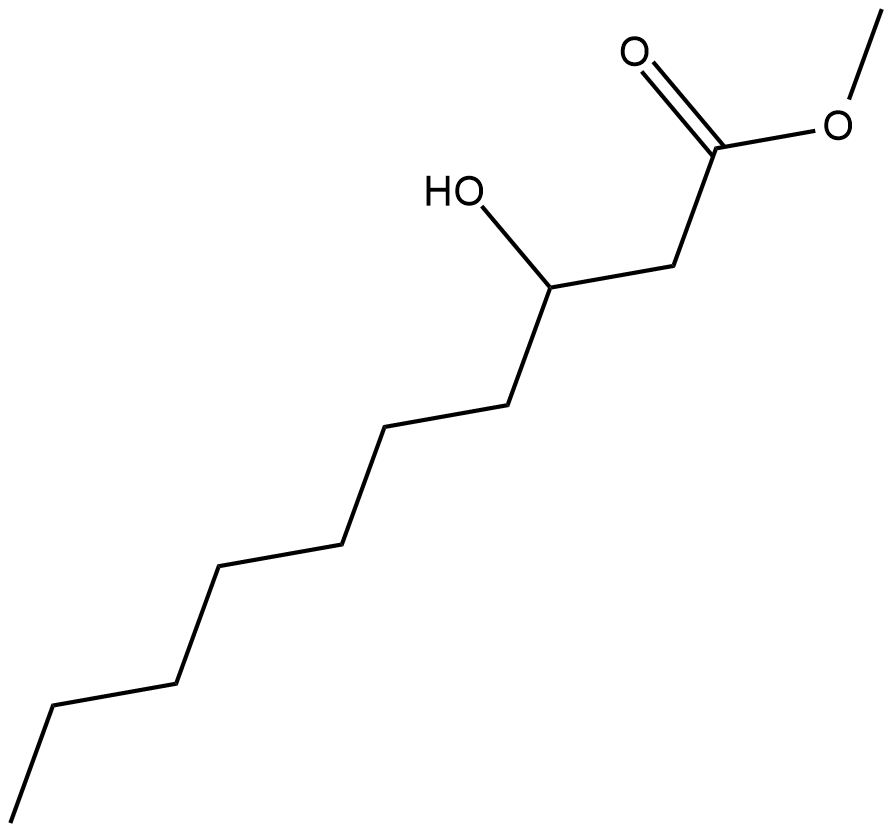
-
GC42275
3-hydroxy Desloratidine
SCH 45581
3-hydroxy Desloratidine is a major metabolite of desloratadine , a tricyclic antagonist of the histamine H1 receptor.
-
GC42276
3-hydroxy Docosanoic Acid
3-hydroxy Behenic Acid, β-hydroxy Docosanoic Acid, 3-hydroxy DCA, β-hydroxy DCA
3-hydroxy Docosanoic acid is a hydroxylated form of the 22-carbon saturated docosanoic acid.
-
GC45774
3-hydroxy Heptadecanoic Acid
β-hydroxy Heptadecanoic Acid, 3-hydroxy Heptadecylic Acid, 3-hydroxy Margaric Acid
A hydroxy fatty acid
-
GC40474
3-hydroxy Lignoceric Acid
3-hydroxy Lignoceric acid is a hydroxylated form of the 24-carbon saturated lignoceric acid.

-
GC49847
3-hydroxy methyl Cefuroxime
Descarbamoyl Cefuroxime
Le 3-hydroxy méthyl céfuroxime est un produit de dégradation du céfuroxime.
-
GC42280
3-hydroxy Myristic Acid methyl ester
methyl 3-hydroxy Myristate, (±)-3-hydroxy Myristic Acid methyl ester, methyl 3-hydroxy Tetradecanoate
3-hydroxy Myristic acid methyl ester is a hydroxylated fatty acid methyl ester that has been found in E.

-
GC42281
3-hydroxy Palmitic Acid
β-hydroxy Hexadecanoic Acid, β-hydroxy Palmitic Acid, DL-3-hydroxy Palmitic Acid
3-hydroxy Palmitic acid is a form of the 16:0 lipid palmitic acid.
-
GC42282
3-hydroxy Palmitic Acid methyl ester
3-hydroxy PAME, 3-hydroxy PA methyl ester
3-hydroxy Palmitic acid methyl ester (3-hydroxy PAME) is an esterized long-chain fatty acid involved in quorum sensing in R.
-
GC42286
3-hydroxy Stearic Acid
3-hydroxy Octadecanoic Acid, β-hydroxy Octadecanoic Acid, β-hydroxy Stearic Acid
3-hydroxy Stearic acid is a long-chain saturated fatty acid and intermediate in the production of 3-hydroxy octadecanedioic acid from stearic acid.
-
GC42288
3-hydroxy Tridecanoic Acid
β-hydroxy Tridecanoic Acid
3-hydroxy Tridecanoic acid is a 13-carbon saturated fatty acid found in bacterial lipopolysaccharides (LPS).
-
GC49819
3-Hydroxy-4-methyl-2(5H)-thiophenone
A degradation product of cefaclor

-
GC45336
3-hydroxy-DL-Kynurenine
DL-3-Hydroxykynurenine
La 3-hydroxy-DL-Kynurénine, amétabolite du tryptophane, est une neurotoxine endogène potentielle dont les niveaux accrus ont été décrits dans plusieurs troubles neurodégénératifs.
-
GC49364
3-Hydroxycoumarin
3-Coumarinol, NSC 74691
La 3-hydroxycoumarine est un inhibiteur puissant et redox de la 15-LOX-1 humaine.
-
GC45337
3-Hydroxyterphenyllin
NSC 299113
La 3-hydroxyterphénylline est un métabolite d'Aspergillus candidus. La 3-hydroxyterphénylline supprime la prolifération et provoque une cytotoxicité contre les cellules A2780/CP70 et OVCAR-3. La 3-hydroxyterphénylline induit l'arrêt de la phase S et l'apoptose. La 3-hydroxyterphénylline a le potentiel pour la recherche sur le cancer de l'ovaire.
-
GC31290
3-Indolepropionic acid
3-Indolepropionic Acid, NSC 3252, NSC 47831
L'acide 3-indolepropionique s'est avéré être un puissant antioxydant et a un potentiel dans le traitement de la maladie d'Alzheimer.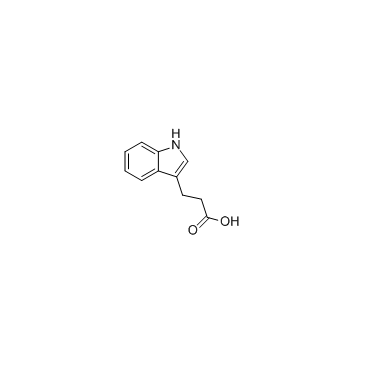
-
GC48457
3-keto Fusidic Acid
3-keto FA, 3-Oxofusidic Acid
An active metabolite of fusidic acid
-
GC64630
3-O-Acetyl-α-boswellic acid
ABA, 3-O-acetyl-α-Boswellic Acid, α-Boswellic Acid Acetate
L'acide 3-O-acétyl-α-boswellique supprime la fonction des cellules T.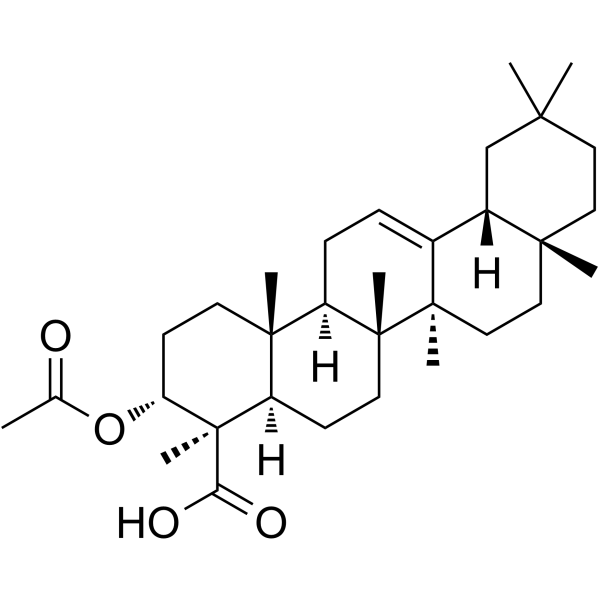
-
GC48488
3-Oxobetulin Acetate
28-O-acetyl-3-Oxobetulin, 3-oxo-28-O-Acetylbetulin
A derivative of betulin
-
GC40692
3-Propylxanthine
D 4028, Enprofylline
La 3-propylxanthine agit comme un antagoniste sélectif et compétitif des récepteurs A2B avec le Ki de 7 μM.
-
GC45354
4β-Hydroxywithanolide E
NSC 212509
4β-Hydroxywithanolide E, isolé de Physalis peruviana L.
-
GC48437
4'-Acetyl Chrysomycin A
A bacterial metabolite with antibacterial and anticancer activities

-
GC42406
4'-hydroxy Chalcone
2-Benzal-4'-hydroxyacetophenone, 2-Benzylidene-4'-hydroxyacetophenone, p-Cinnamoylphenol, NSC 242264
La 4'-hydroxy Chalcone est une chalcone isolée de la racine de réglisse, avec une activité hépatoprotectrice.
-
GC18527
4'-hydroxy Flurbiprofen
A major active metabolite of flurbiprofen
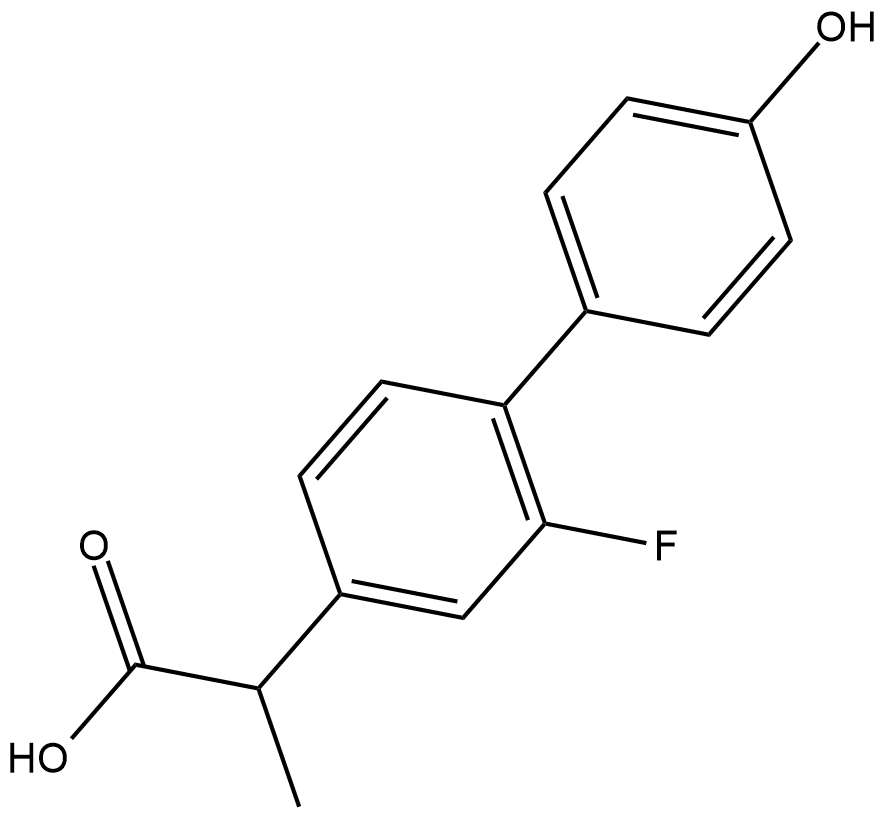
-
GC46608
4-(N-Boc-amino)piperidine
4-(t-Butoxycarbonylamino)piperidine, 4-(tert-Butoxycarbonylamino)piperidine
An organic building block
-
GC46609
4-(Phenylcarbonyl)benzoic Acid
4-Benzoylbenzoic Acid, 4-Carboxybenzophenone, NSC 37115, p-Benzoylbenzoic Acid, p-Carboxybenzophenone
A photooxidant
-
GC49337
4-Acetamidobenzenesulfonamide
APAS, N-Acetyl p-Aminobenzene Sulfonamide, N4-Acetyl Sulfanilamide, N-Acetylsulfanilamide, NSC 217, NSC 406839
A metabolite of asulam and sulfanilamide
-
GC42338
4-Aminobenzoic Acid hydrazide
4ABAH, Myeloperoxidase Inhibitor 1, NSC 640
L'hydrazide d'acide 4-aminobenzoÏque est un inhibiteur irréversible de la myéloperoxydase MPO avec une IC50 de 0,3 μM.
-
GC42351
4-carboxy TEMPO
4-Carboxyl-2,2,6,6-tetramethylpiperidin-1-oxyl
4-carboxy TEMPO is a nitroxide and spin label.
-
GC46630
4-CPPC
A MIF-2 inhibitor

-
GC42369
4-Deoxypyridoxine (hydrochloride)
4-Deoxypyridoxine, DOP, 4-DPD
4-Deoxypyridoxine (4-DPD) is a vitamin B6 antimetabolite with diverse biological activities.
-
GC42373
4-epi Minocycline
4-EMC, Minocycline Impurity A
4-epi Minocycline is the main degradation product of and a potential impurity in commercial preparations of minocycline.
-
GC42374
4-epi-Chlortetracycline (hydrochloride)
7-chloro-2-Naphthacenecarboxamide
Chlortetracycline is an analog of tetracycline, a broad spectrum antibiotic.
-
GC42401
4-hydroperoxy Cyclophosphamide
4-OOH-CY
Un analogue activé de la cyclophosphamide.

-
GC18858
4-hydroxy Alternariol
4-hydroxy AOH, 4-OH AOH
4-hydroxy Alternariol is a metabolite of the mycotoxin alternariol formed through cytochrome P450 (CYP450) metabolism.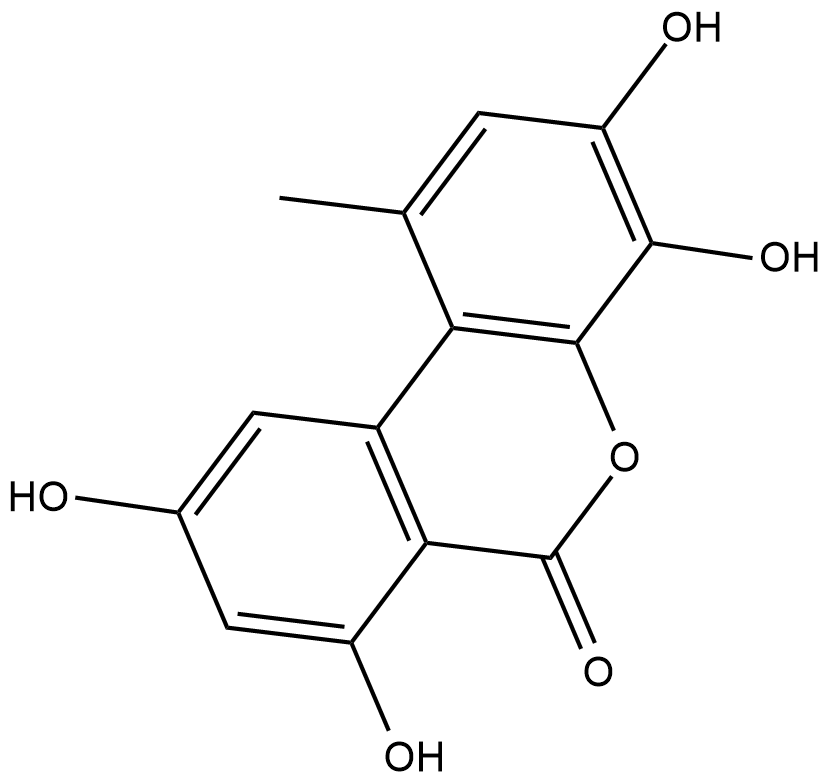
-
GC49575
4-hydroxy Omeprazole sulfide
4-hydroxy OMEP sulfide, 4-hydroxy OMP sulfide, 4-hydroxy OMZ sulfide
A metabolite of omeprazole
-
GA20418
4-Hydroxy-hippuric acid
p-Hydroxyhippuric Acid; para-Hydroxyhippuric Acid
Polyphenol metabolite.
-
GC38663
4-Hydroxychalcone
2-Benzal-4'-hydroxyacetophenone, 2-Benzylidene-4'-hydroxyacetophenone, p-Cinnamoylphenol, NSC 242264
La 4-hydroxychalcone est un métabolite de la chalcone aux activités anti-angiogéniques et anti-inflammatoires.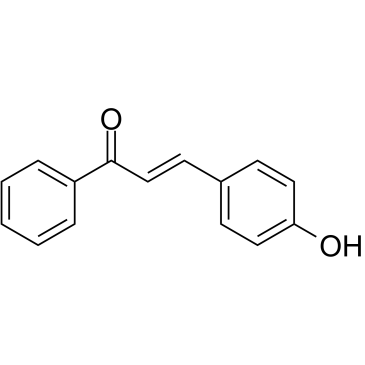
-
GC33815
4-Hydroxyphenylacetic acid
4-HPAA, p-HPAA, para-HPAA, p-Hydroxyphenylacetic Acid, para-Hydroxyphenylacetic Acid, NSC 25066, NSC 27460
L'acide 4-hydroxyphénylacétique, un métabolite majeur des polyphénols issu du microbiote, est impliqué dans l'action antioxydante.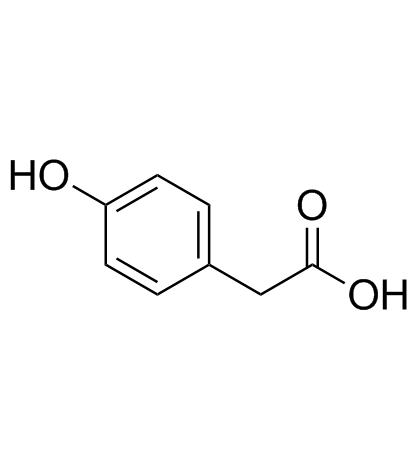
-
GC18853
4-isocyanato TEMPO
4-isocyanato TEMPO is a spin labeling reagent used to label the 2'-position in RNA.
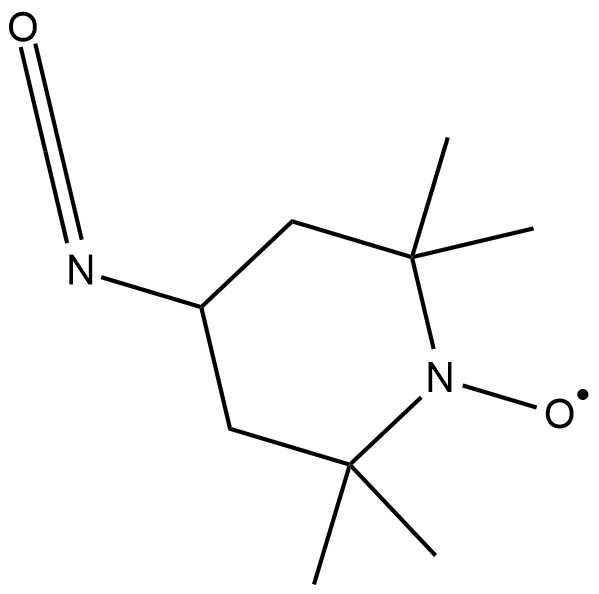
-
GC41299
4-Methylumbelliferyl Caprylate
MUCAP, 4-MU Caprylate
4-Methylumbelliferyl caprylate (MUCAP) is a fluorogenic substrate for C8 esterase.
-
GC42448
4-MUNANA (sodium salt)
4-MUNANA, Neu5Ac-α-4MU, Sodium 2-(4-methylumbelliferyl)-N-acetylneuraminate, 4-Methylumbelliferyl-N-acetyl-α-D-Neuraminic Acid
L'acide 4-méthylumbelliféryl-N-acétyl-α-D-neuraminique (sel de sodium) est un substrat fluorescent utilisé pour le dosage de l'activité de la neuraminidase.
-
GC42461
4-Nitrophenyl β-D-Cellobioside
p-Nitrophenyl β-D-Cellobioside, para-Nitrophenyl β-D-Cellobioside
4-Nitrophenyl β-D-cellobioside is a disaccharide and an enzyme substrate.
-
GC46672
4-Nitrophenyl Palmitate
p-Nitrophenyl Palmitate, para-Nitrophenyl Palmitate, pNpp
A colorimetric lipase and esterase substrate
-
GC35143
4-O-Methyl honokiol
NSC 293101, 4-Methoxyhonokiol
Le 4-O-méthyl honokiol est un néolignan naturel isolé de Magnolia officinalis, agit comme un agoniste PPARγ et inhibe l'activité NF-κB, utilisé pour la recherche sur le cancer et l'inflammation.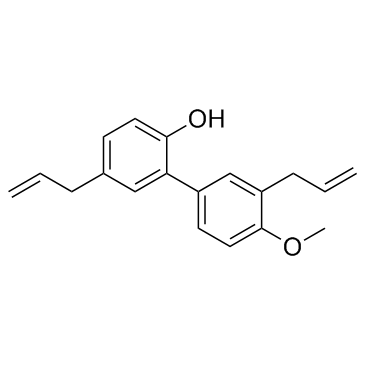
-
GC31648
4-Octyl Itaconate
Le 4-octyl itaconate (4-OI) est un dérivé d'itaconate perméable aux cellules. L'itaconate et le 4-octyl itaconate ont une réactivité similaire avec les thiols, ce qui fait du 4-octyl itaconate un substitut approprié pour étudier sa fonction biologique.
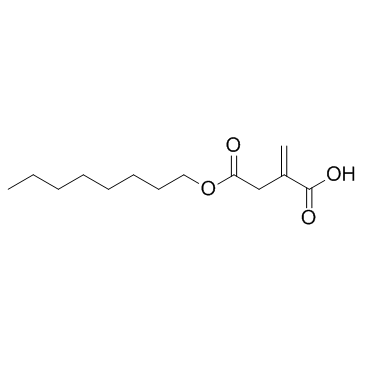
-
GC46673
4-octynyl Itaconate
ITalk
L'itaconate de 4-octynyle (ITalk) est une sonde bioorthogonale spécifique pour le profilage chimioprotéomique quantitatif et spécifique au site de l'itaconation dans les cellules vivantes.
-
GC49127
4-oxo Cyclophosphamide
4-keto CP, 4-keto Cyclophosphamide, NSC 139488, 4-oxo CP
An inactive metabolite of cyclophosphamide
-
GC49244
4-oxo Isotretinoin
Ro 22-6595
An active metabolite of isotretinoin
-
GC40477
4-Thiouracil
2-hydroxy-4-Mercaptopyrimidine, NSC 43288, 4-Thiopyrimidin-2-one, 4-TU
4-Thiouracil is a site-specific, photoactivatable probe used to detect RNA structures and nucleic acid-nucleic acid contacts.
-
GC18582
5'-hydroxy Meloxicam
A metabolite of meloxicam
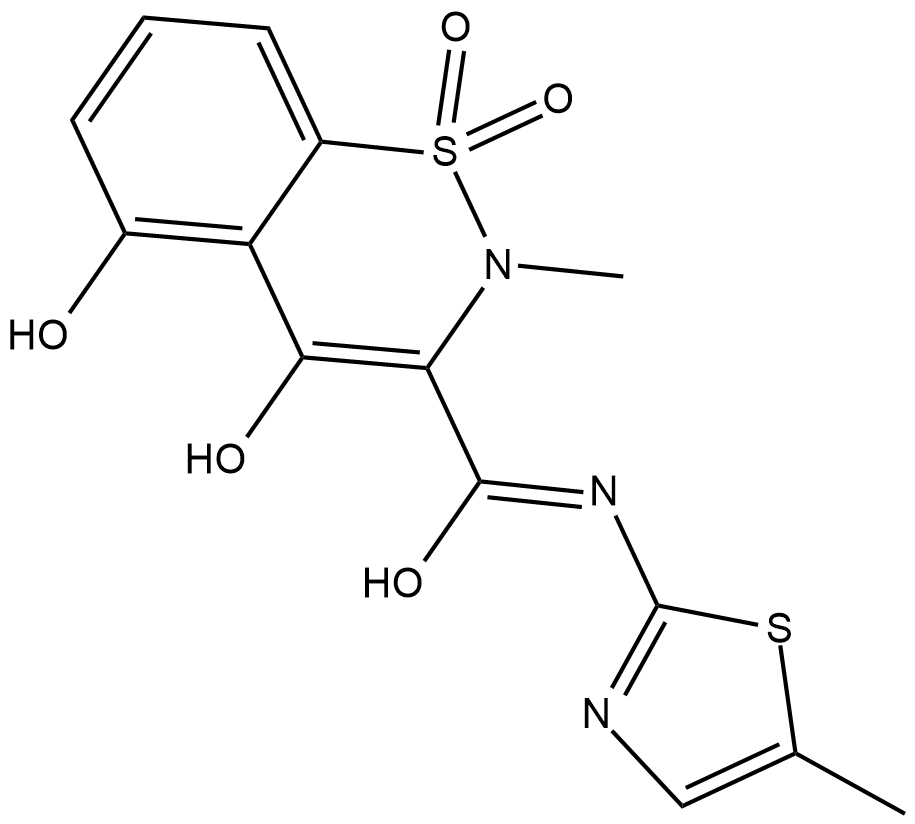
-
GC48381
5'-pApA (sodium salt)
c-di-AMP Control, Cyclic di-AMP Negative Control
A linearized form of cyclic di-AMP
-
GC48375
5'-pGpG (sodium salt)
c-di-GMP Control, Cyclic di-GMP Negative Control
A linearized form of cyclic di-GMP
-
GC49339
5(6)-Carboxy-2′,7′-dichlorofluorescein diacetate
CDFDA
Le diacétate de 5(6)-carboxy-′,7′-dichlorofluorescéine est un indicateur fluorescent à pénétration cellulaire.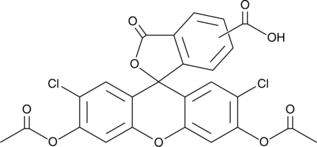
-
GC41126
5(S),12(S)-DiHETE
5(S),12(S)-DiHETE is a natural bioactive lipid derived from arachidonic acid.
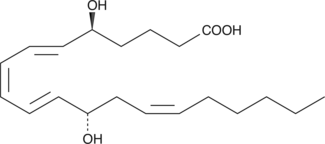
-
GC41127
5(S),15(S)-DiHETE
Le 5(S),15(S)-DiHETE est un intermédiaire « activé », inhibe l'agrégation plaquettaire avec une IC50 de 1,3 μM.
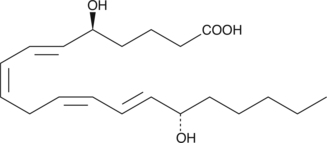
-
GC40782
5(Z),11(Z),14(Z)-Eicosatrienoic Acid
5,11,14,20:3, Sciadonic Acid
5(Z),11(Z),14(Z)-Eicosatrienoic acid is a polyunsaturated fatty acid found in various natural sources including maritime pine (Pinus pinaster) seed oil (MPSO), gymnospermae leaves and seeds, and freshwater gastropods.
-
GC46075
5,6-dimethyl-2-Thiouracil
Dimethylthiouracil, NSC 60687
A heterocyclic building block
-
GC48815
5,7,8-Trimethoxydictamnine
Acronycidine, NSC 30619
A quinoline alkaloid with antimalarial activity
-
GC52091
5,7-Dichlorothiazolo[5,4-d]pyrimidine
A building block
![5,7-Dichlorothiazolo[5,4-d]pyrimidine Chemical Structure 5,7-Dichlorothiazolo[5,4-d]pyrimidine Chemical Structure](/media/struct/GC5/GC52091.png)
-
GC52227
5-(3',4'-Dihydroxyphenyl)-γ-Valerolactone
(±)-δ-(3,4-Dihydroxyphenyl)-γ-Valerolactone, 5-(3',4'-Dihydroxyphenyl)-γ-VL
An active metabolite of various polyphenols
-
GC40527
5-(Hydroxymethyl)-2'-deoxyuridine
5-(Hydroxymethyl)-2'-deoxyuridine is a nucleoside analog with anticancer and antiviral activities.

-
GC52413
5-Aminosalicylic Acid-d7
5-ASA-d7, Mesalamine-d7, Mesalazine-d7
An internal standard for the quantification of 5-aminosalicylic acid
-
GC49827
5-Androstenetriol
Δ5-AT
An active metabolite of DHEA
-
GC45357
5-Chlorouracil

-
GC49233
5-Feruloylquinic Acid
5-FQA
L'acide 5-féruloylquinique (5-FQA) possède des effets antioxydants et des activités inhibitrices de la tyrosinase.
-
GC39760
5-Galloylquinic acid
Acide 5-galloylquinique, un piégeur principal des espèces réactives de l'oxygène (ROS) dans le thé vert.
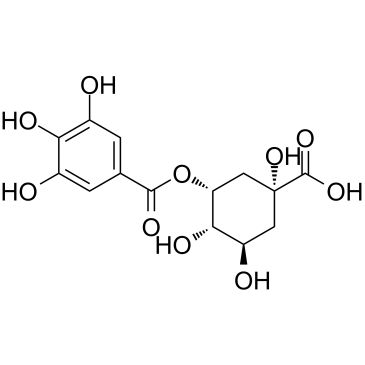
-
GC46033
5-Heneicosylresorcinol
An alkylresorcinol

-
GC42549
5-hydroxy Thiabendazole
5-OH TBZ
5-hydroxy Thiabendazole (5-OH TBZ) is a major metabolite of the anthelmintic thiabendazole.
-
GC61638
5-Hydroxyoxindole
Le 5-hydroxyoxindole est un analogue structurel de l'acide urique.
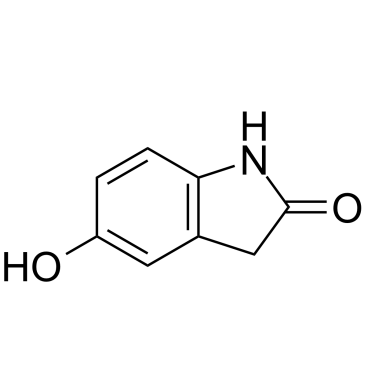
-
GC46705
5-Methoxycanthinone
5-Methoxycanthin-6-one, NSC 88929
La 5-méthoxycanthinone est un inhibiteur actif par voie orale des souches de Leishmania.
-
GC40380
5-OxoETE
5-KETE
5-OxoETE is a polyunsaturated keto acid formed by the oxidation of 5-HETE in human neutrophils by a specific dehydrogenase.

-
GC46712
5-Phenyllevulinic Acid
5-Phenyl-4-Oxopentanoic Acid
A fungal metabolite
-
GC46079
5-Tricosylresorcinol
Le 5-tricosylresorcinolthe est le premier lipide du kyste.

-
GC49676
6β-hydroxy Budesonide
A metabolite of budesonide
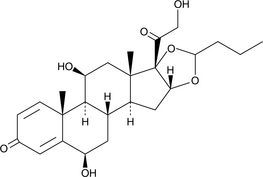
-
GC49629
6β-hydroxy Prednisolone
A metabolite of prednisolone

-
GC19536
6'-Sialyllactose Sodium Salt
6'-N-Acetylneuraminyl-D-lactose
6'-Sialyllactose (sodium), un oligosaccharide prédominant du lait, réduit l'internalisation de Pseudomonas aeruginosa dans les pneumocytes humains.
-
GC45772
6(5H)-Phenanthridinone
NSC 11021, NSC 40943, NSC 61083
An inhibitor of PARP1 and 2
-
GC41424
6(S)-Lipoxin A4
5(S),6(S)-Lipoxin A4, 6-epi-Lipoxin A4, 6(S)-LXA4, 5(S),6(S),15(S)-TriHETE
The lipoxins are trihydroxy fatty acids containing a 7,9,11,13-conjugated tetraene.
-
GC46721
6-Chloro-2-fluoropurine
NSC 37363
A heterocyclic building block
-
GC49551
6-Chloropurine Riboside
NSC 4910
A nucleoside precursor
-
GC49749
6-Deoxypenciclovir
BRL 42359
An inactive metabolite of famciclovir
-
GC45955
6-Ethyl-2,7-dimethoxyjuglone
2,7-Dimethoxy-6-ethyljuglone
La 6-éthyl-2,7-diméthoxyjuglone est un métabolite isolé de champignons d'eau douce.
-
GC46724
6-Hydroxypyridin-3-ylboronic Acid
A heterocyclic building block

-
GC49235
6-Methylmercaptopurine
6-MMP, 6-(Methylthio)purine, NSC 20105, SQ 8,343
A metabolite of 6-mercaptopurine
-
GC49488
6-Methylmercaptopurine-d3
6-MMP-d3, 6-(Methylthio)purine-d3
An internal standard for the quantification of 6-MMP
-
GC49864
6-Methylpterin
6-MPT
A derivative of folic acid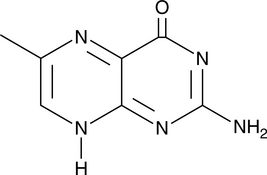
-
GC45715
6-Prenylindole
A bacterial metabolite

-
GC18776
6α-hydroxy Cholesterol
6α-OHC
6α-hydroxy Cholesterol is an oxysterol that increases superoxide anion production in SK-N-BE cells when used at concentrations of 50 and 100 μM.
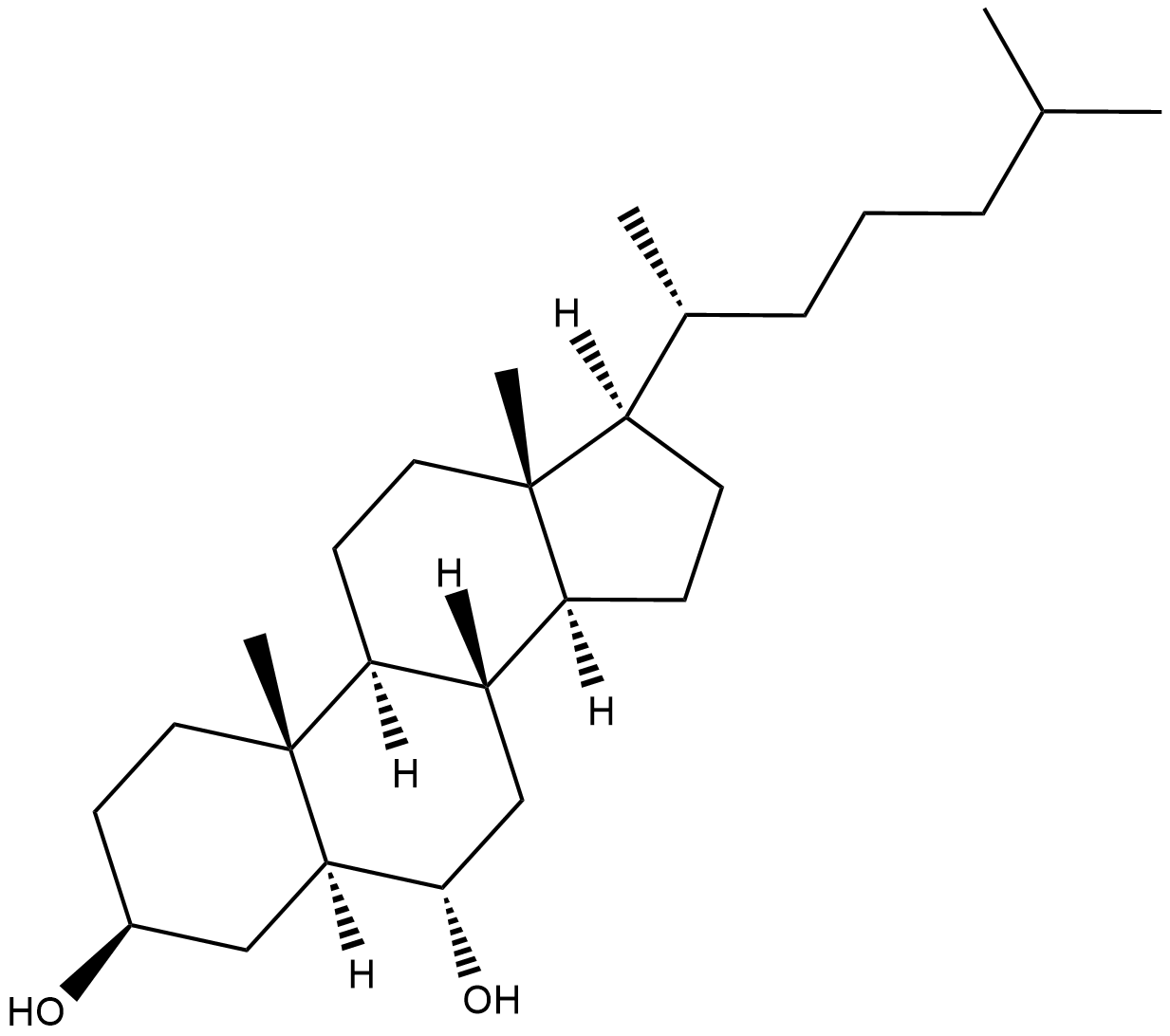
-
GC40202
7α-hydroxy Cholesterol-d7
7α-hydroxycholesterol-d7
7α-hydroxy Cholesterol-d7 is intended for use as an internal standard for the quantification of 7α-hydroxy cholesterol by GC- or LC-MS.

-
GC49206
7α-hydroxy Dehydroepiandrosterone
7α-hydroxy DHEA
An active metabolite of dehydroepiandrosterone
-
GC46740
7β,27-dihydroxy Cholesterol
7β,27-DHC
An oxysterol and agonist of RORγ and RORγt
-
GC52471
7(S),10(S)-DiHOME
DHOE, DOD
An antibacterial hydroxy fatty acid
-
GC46732
7(S),17(S)-dihydroxy-8(E),10(Z),13(Z),15(E),19(Z)-Docosapentaenoic Acid
7(S),17(S)hydroxy DPA
A metabolite of DPA with antiinflammatory properties
-
GC48769
7,10-dihydroxy-8(E)-Octadecenoic Acid
An antibacterial hydroxy fatty acid

-
GC46733
7,12-Dimethylbenz[a]anthracene
DMBA
Le 7,12-diméthylbenz[a]anthracène a une activité cancérigène en tant qu'hydrocarbure aromatique polycyclique (HAP). Le 7,12-diméthylbenz[a]anthracène est utilisé pour induire la formation de tumeurs chez divers modèles de rongeurs.![7,12-Dimethylbenz[a]anthracene Chemical Structure 7,12-Dimethylbenz[a]anthracene Chemical Structure](/media/struct/GC4/GC46733.png)
-
GC35184
7,3',4'-Tri-O-methylluteolin
La 7,3',4'-tri-O-méthyllutéoline (5-hydroxy-3',4',7-triméthoxyflavone), un composé flavonoÏde, possède de puissants effets anti-inflammatoires dans la lignée cellulaire de macrophages induite par le LPS médiée par l'inhibition de libération de médiateurs inflammatoires, NO, PGE2 et cytokines pro-inflammatoires.
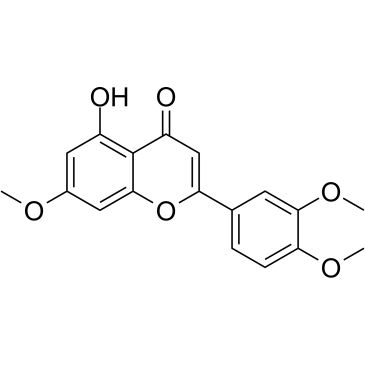
-
GC46080
7,3',4'-Trihydroxyflavone
3’,4’,7-Trihydroxyflavone, 5-Deoxyluteolin
7,3',4'-La trihydroxyflavone est un composé aglycone flavonoÏde isolé des gousses de fèves.
-
GC35185
7,4'-Dihydroxyflavone
7,4'-DHF
La 7,4'-dihydroxyflavone (7,4'-DHF) est un flavonoÏde isolé de Glycyrrhiza uralensis, l'inhibiteur de l'éotaxine/CCL11, a la capacité de supprimer systématiquement la production d'éotaxine et de prévenir les effets indésirables paradoxaux de la dexaméthasone (Dex) sur la production d'éotaxine. 1].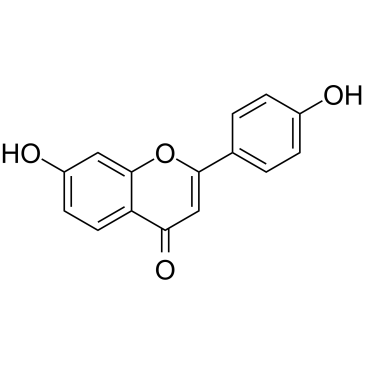
-
GC45673
7,8-Dihydroneopterin
D-erythro-7,8-Dihydroneopterin
La 7,8-dihydronéoptérine, un marqueur de l'inflammation, induit l'apoptose cellulaire dans les astrocytes et les neurones via l'amélioration de l'expression de l'oxyde nitrique synthase (iNOS).


